STATISTICS
As of the latest figures, the National Disability Insurance Scheme (NDIS) supports 692,823 participants. Of these, 51% are under the age of 18, reflecting the significant number of young Australians benefiting from the program. Among adult participants, 21% of NDIS budgets remain utilised, indicating potential challenges in accessing or implementing available supports. The average plan amount for adults is ~$66,000, underscoring the financial commitment to improving the quality of life for people living with disabilities.
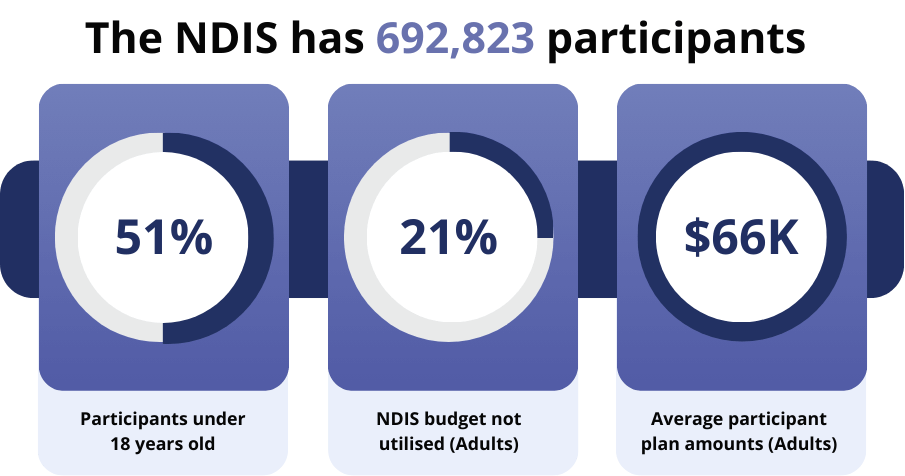
Latest SDA Demand Data in Australia
The latest SDA demand data highlights the growing need for Specialist Disability Accommodation (SDA) across various states and territories in Australia. As of the most recent government report, there are 24,181 SDA-funded participants, including those already residing in SDA dwellings and those still seeking suitable accommodations.
- Participants in SDA dwellings: 14,688 individuals currently live in SDA-approved housing across Australia.
- Participants seeking SDA dwellings: 9,834 individuals are actively seeking suitable accommodations, either because they’ve been approved for funding or are transitioning to SDA properties.
Breaking it down further:
- New South Wales (NSW) has the highest total SDA-funded participants, with 7,822 people, of which 4,922 are already in dwellings, while 2,900 are still seeking suitable homes.
- Victoria (VIC) follows closely with 7,144 participants, split into 5,090 in dwellings and 2,054 still seeking.
- Other key states like Queensland (QLD) and Western Australia (WA) show significant numbers as well, with 4,089 and 1,792 total participants, respectively.
Smaller states and territories, such as Tasmania (TAS), South Australia (SA), and the Australian Capital Territory (ACT), show steady but lower levels of demand, reflecting the need for targeted investment in these regions to meet specific local requirements.
This SDA demand data demonstrates a clear gap between the availability of SDA housing and the growing need for disability-friendly accommodation. For investors and developers, these figures present a significant opportunity to meet demand in high-priority areas such as NSW, VIC, and QLD, while also addressing gaps in smaller states and territories.
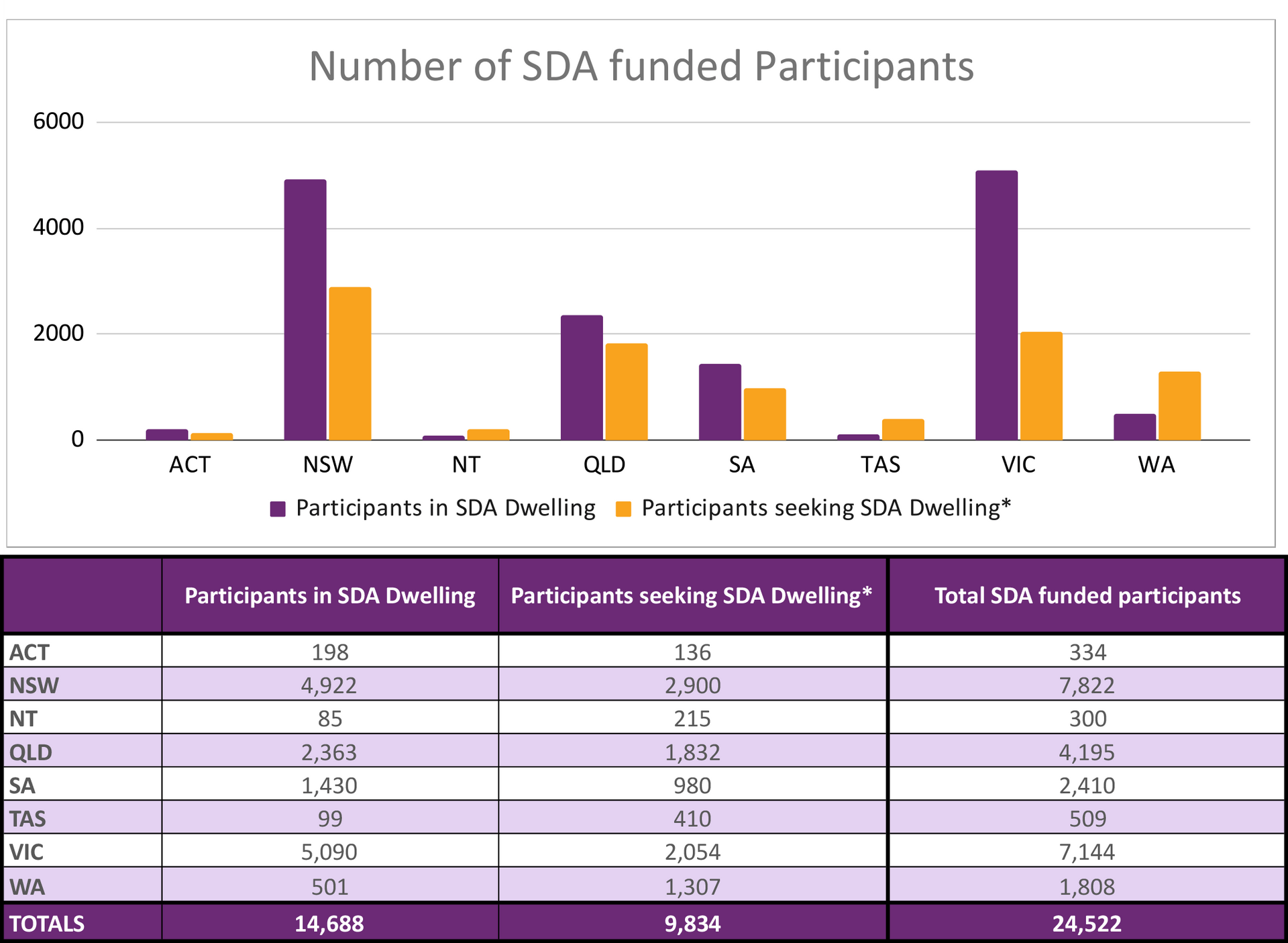
SDA Supply Data in Australia
The latest SDA supply data highlights the current state of Specialist Disability Accommodation (SDA) availability across Australia. A total of 17,134 SDA dwellings exist across various states, with significant variation in supply across dwelling types and regions.
National Breakdown of Dwelling Types
- High Physical Support accommodations make up the largest share, with 8,758 dwellings. This reflects strong alignment with the demand for highly accessible housing.
- Improved Livability has 2,335 dwellings, focusing on residents with moderate accessibility needs.
- Fully Accessible dwellings account for 1,392, highlighting the importance of addressing the specific needs of people with significant mobility impairments.
- Robust housing, designed for security and durability, totals 2,438 dwellings.
- Basic accommodations contribute 2,006 dwellings, and Hybrid designs are the smallest category, with only 205 dwellings.
State-by-State Overview
- New South Wales (NSW): NSW leads in overall supply, with 4,259 SDA dwellings, heavily dominated by 1,918 High Physical Support dwellings.
- Victoria (VIC): VIC reports the highest total supply at 5,179 dwellings, offering a balanced range across categories, including the highest number of Fully Accessible dwellings (454), however it does have a potential oversupply of Robust dwellings (1,142)
- Queensland (QLD): With 3,827 dwellings, QLD has one of the strongest supplies of High Physical Support housing (2,338).
- South Australia (SA): SA offers 2,019 dwellings, with a consistent distribution of Robust, Improved Livability, and High Physical Support options.
- Western Australia (WA): WA’s 1,191 dwellings have a particularly high percentage of High Physical Support dwellings at 910.
- Smaller regions such as Tasmania (TAS) (240 dwellings) and the Australian Capital Territory (ACT) (233 dwellings) contribute lower numbers but remain steady in specific dwelling categories.
Key Observations
- High Physical Support dwellings dominate supply, indicating a strong focus on meeting demand for individuals with higher support needs. However, other categories such as Improved Livability and Fully Accessible dwellings are comparatively underserved.
- Regional disparities are evident, with NSW, VIC, and QLD making up the majority of the national supply. Smaller states and territories have limited options, reflecting opportunities for investment to meet local demand.
- Pipeline and future development are likely to influence how these numbers evolve, particularly in states with growing participant numbers, such as NSW and QLD.
Opportunities
The data indicates an ongoing need to diversify dwelling types and expand supply in underrepresented areas. For developers and investors, there is potential to address the gaps in regions with lower dwelling numbers and focus on less prevalent categories like Robust and Fully Accessible housing.
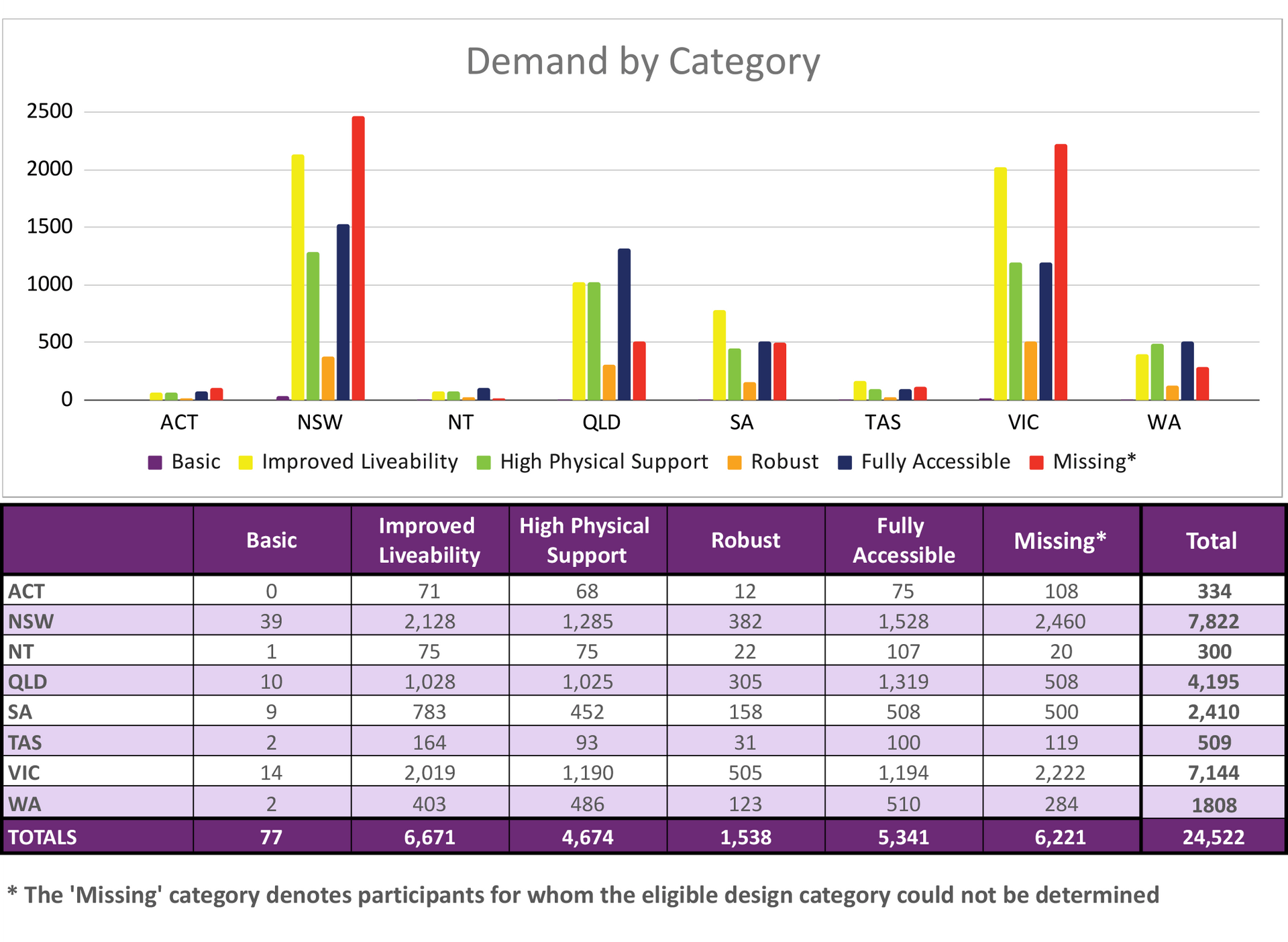
NDIS - SDA Housing: Key Statistics and Projections for 2032
By 2032, the National Disability Insurance Scheme (NDIS) is forecast to support approximately 1,017,522 Australians living with a disability. Of these, nearly 30,000 participants, or 3%, are expected to be eligible for Specialist Disability Accommodation (SDA) funding. To meet the projected demand, an estimated 3,270 additional new SDA dwellings will need to be built, highlighting a critical gap in the current housing supply.
As of September 2024, there are 13,143 SDA dwellings New Build dwellings in the system, including those in the Pipeline, while 3,991 existing and legacy properties are currently serving participants. Despite this, a shortfall of 3,270 dwellings remains to meet the anticipated needs by 2032.

SDA Housing Forecast and Current Needs
The NDIS housing forecast for 2032 highlights significant demand and supply gaps in Specialist Disability Accommodation (SDA). These insights provide a clear understanding of where the system currently stands and where improvements are needed.
Forecasted Demand by 2032
- By 2032, the NDIS is expected to cover 1,017,522 Australians with disabilities, with 30,000 people eligible for SDA funding (3% of the total).
- To meet this demand, an estimated 3,270 additional SDA new builds may be required across Australia.
Current SDA Housing Status
- Existing SDA dwellings: There are 13,143 new build and pipeline dwellings and 3,991 existing and legacy properties.
- Participants in outdated facilities:
- Around 11,000 live in group homes and legacy properties.
- 911 participants are in aged care settings.
- 1,224 participants remain in hospitals due to a lack of appropriate SDA housing (As per 2023 data)
Future Requirements
- A total of 16,000 SDA new builds re estimated to be required by 2032 to address the expected demand (excluding legacy and existing dwellings).
- The shortfall currently stands at 3,270 new builds to meet future demand projections.
State-by-State Insights
- New South Wales (NSW) has the highest SDA-funded participants (7,737) but a significant shortfall, with only 2,913 New Build places available.
- Victoria (VIC) also faces a challenge, with 7,033 participants and 2,739 places in New Build.
- Smaller states like the Northern Territory (NT) and Tasmania (TAS) demonstrate more balanced participant-to-place ratios but lower overall capacity, indicating slower growth in SDA supply in these areas.
Key Observations
- Housing Shortfalls Persist: Despite ongoing development, the gap between demand and supply will widen without significant new investments. This highlights the need for accelerated SDA development, particularly in states like NSW and VIC.
- Aged Care and Hospitals Are Overburdened: A significant portion of participants remain in unsuitable accommodations, such as aged care facilities and hospitals, reflecting an urgent need for appropriate SDA alternatives.
- Opportunities in Smaller States: Regions like TAS and NT have lower overall demand but could benefit from targeted development to enhance capacity and accessibility.
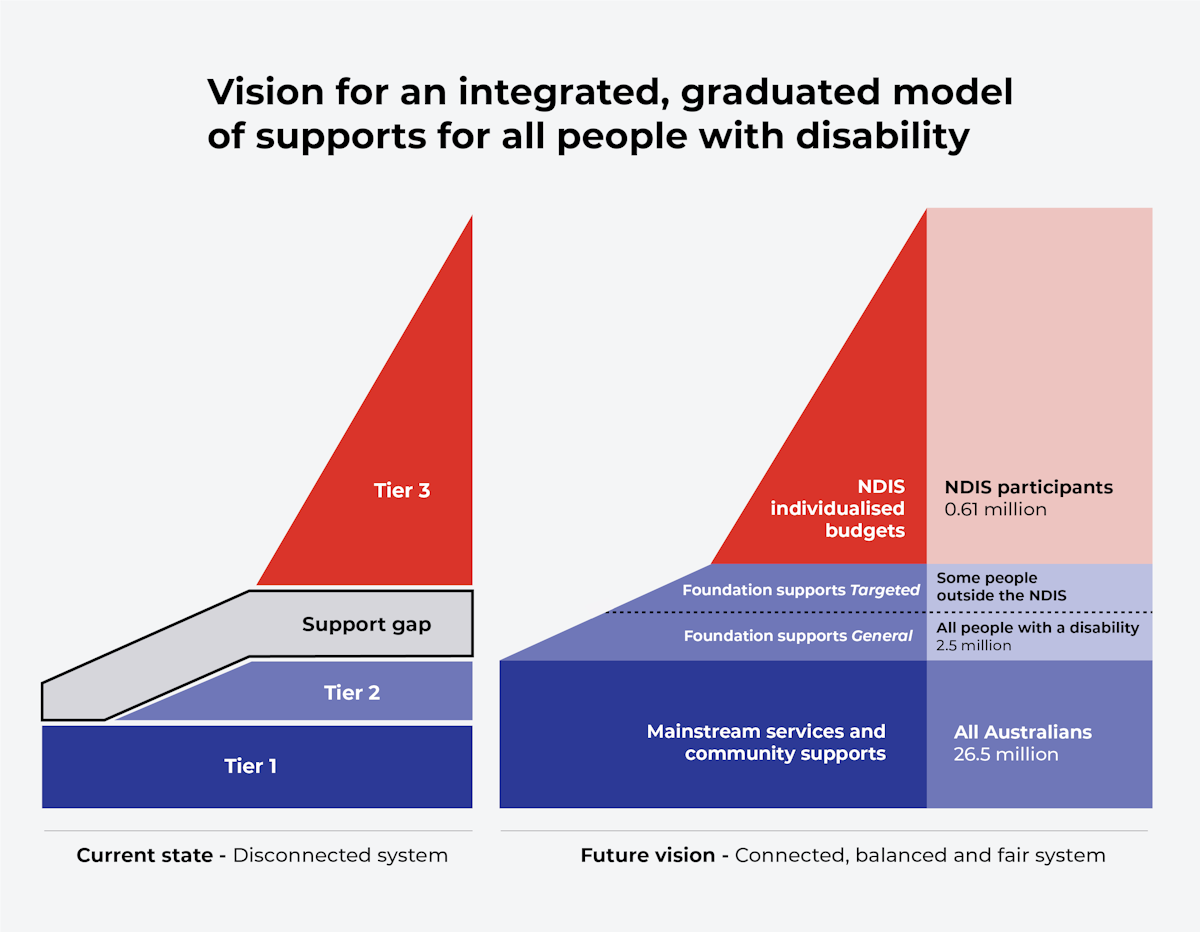
Where we are now
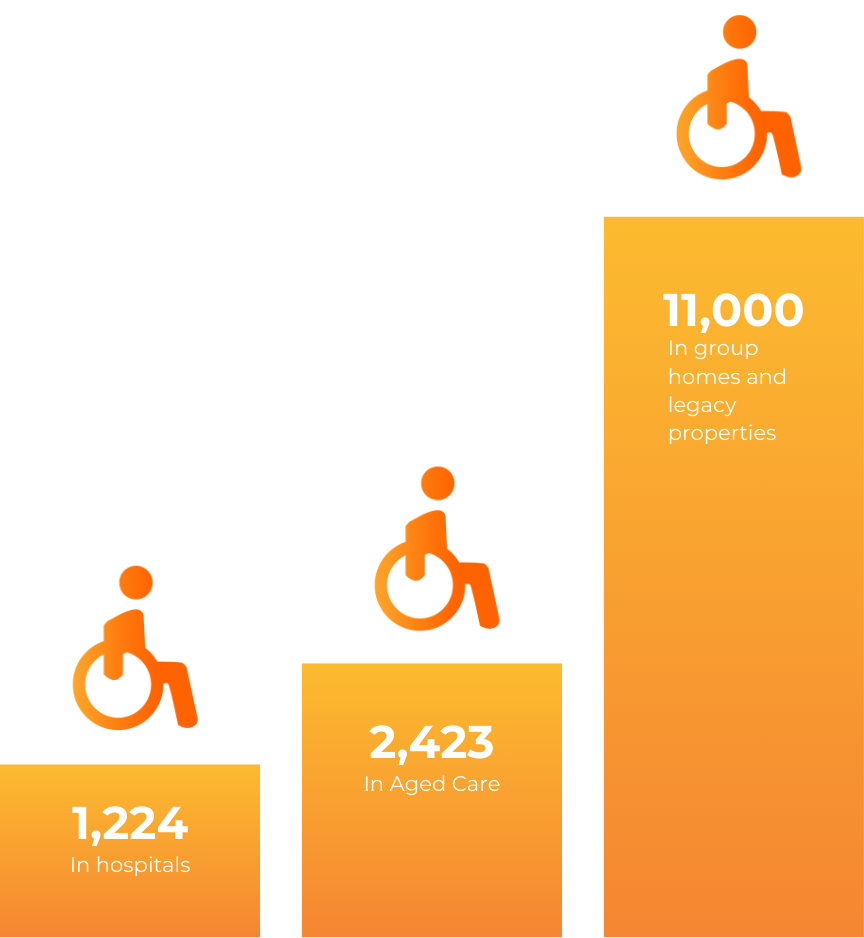
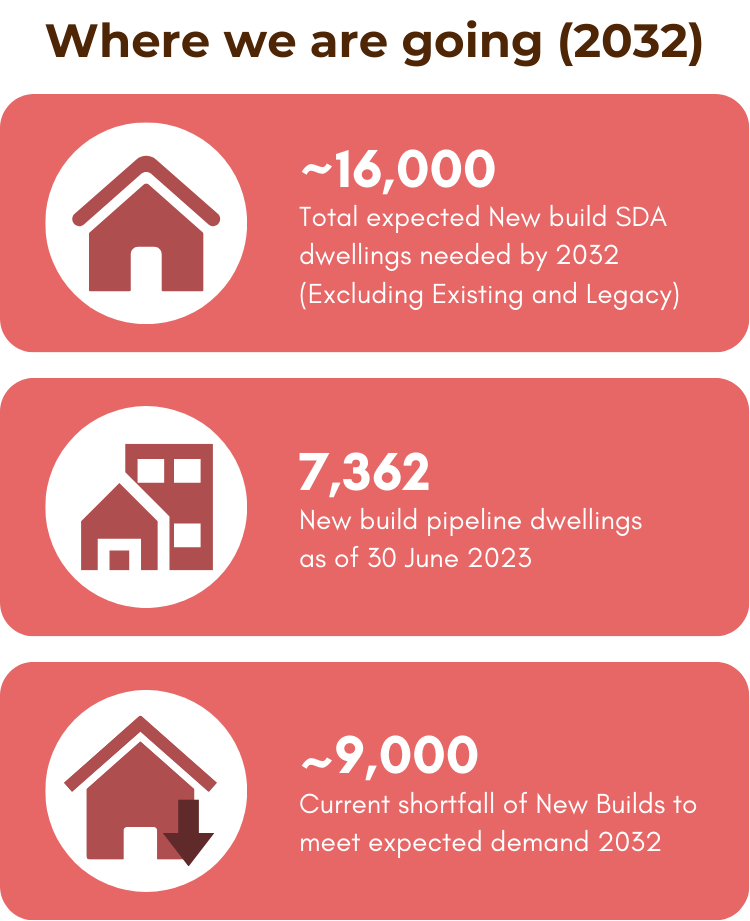
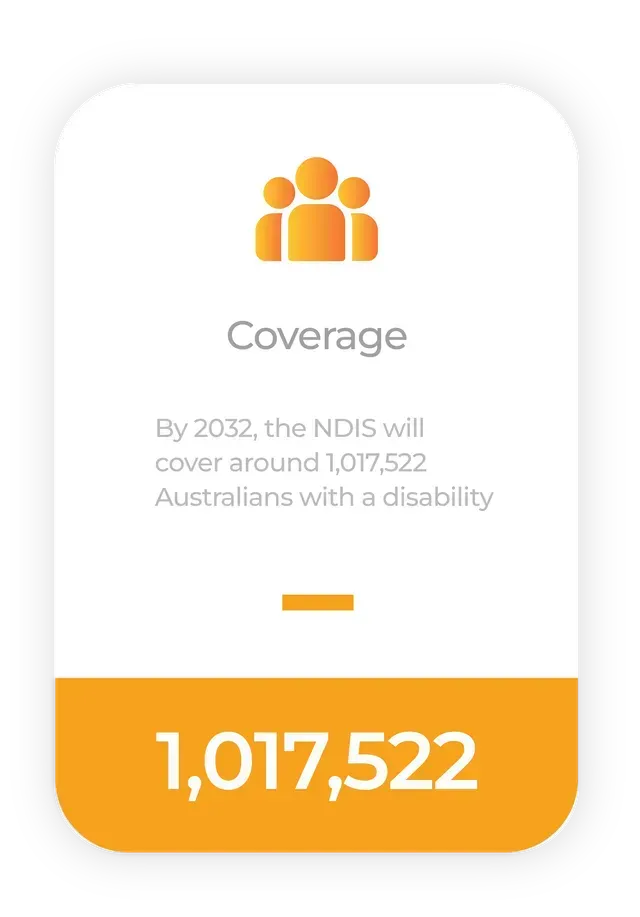
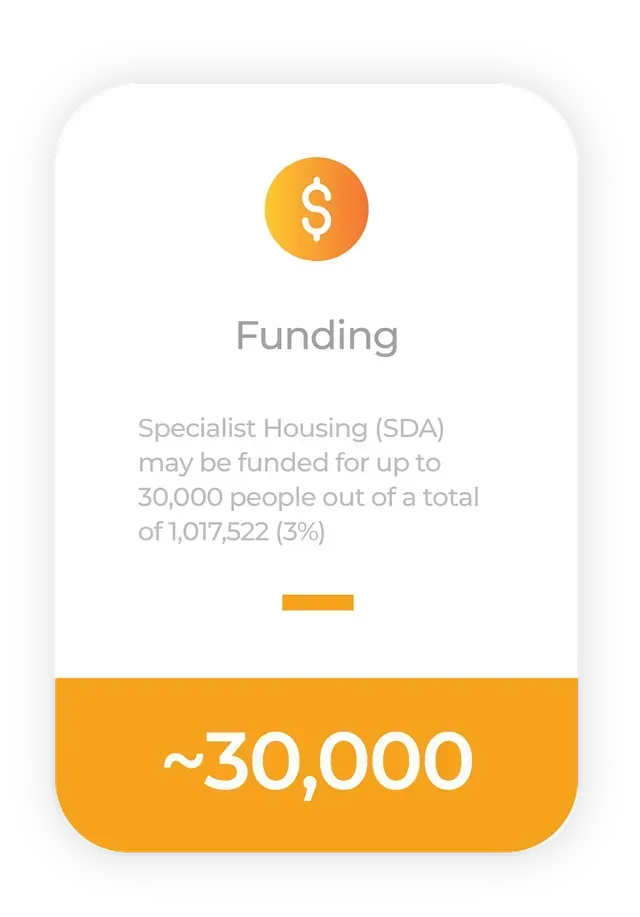
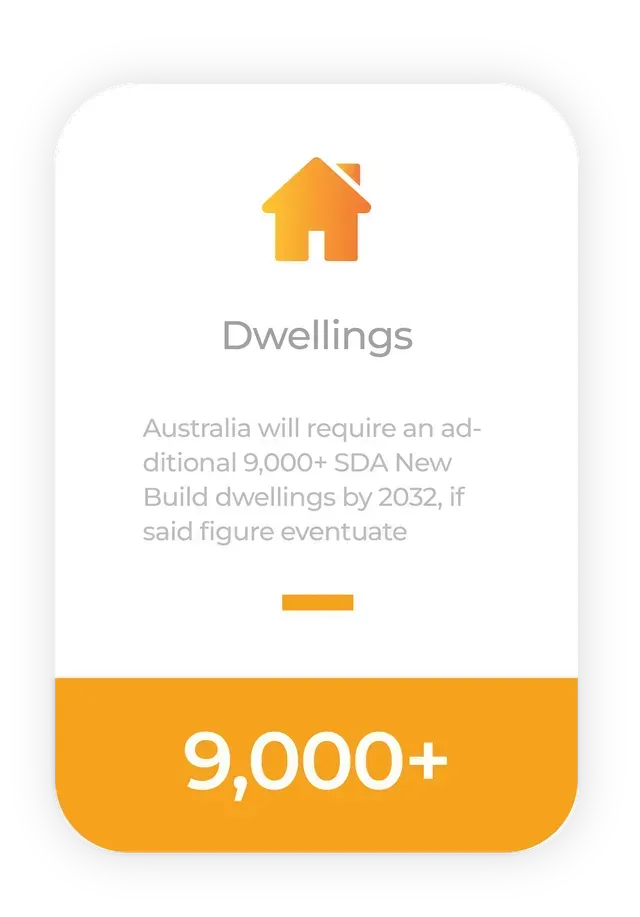
HAVE A QUESTION?
Submit a question below, or call us on 1300 806 462

